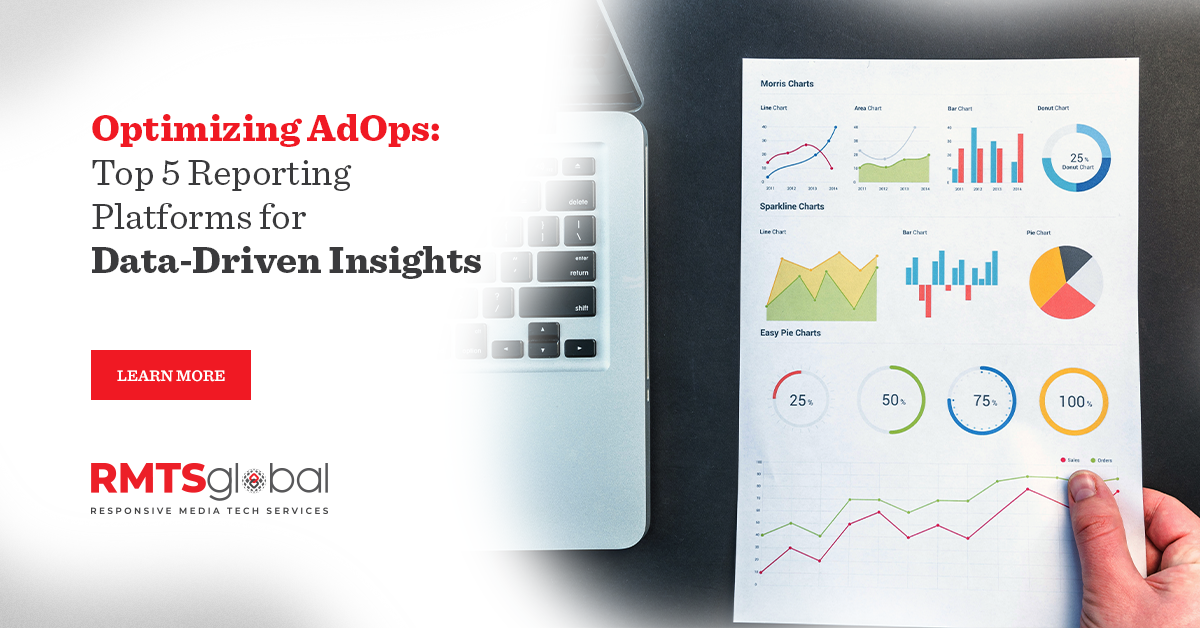In the world of advertising operations (AdOps), reporting platforms play a crucial role in providing insights, data visualization, and performance analytics to help advertisers, publishers, and agencies optimize their advertising campaigns. These platforms offer comprehensive reporting functionalities, allowing users to track key metrics, monitor campaign performance, and make data-driven decisions. Here is an overview of the utility of reporting platforms in AdOps and the top five platforms in the industry:
Utility of Reporting Platforms in AdOps:
- Data Visualization: Reporting platforms transform complex campaign data into visually appealing and easy-to-understand dashboards and reports. This enables users to analyze performance at a glance and identify trends, patterns, and areas of improvement.
- Performance Tracking: Reporting platforms allow users to track and measure key performance indicators (KPIs) such as impressions, clicks, conversions, revenue, and more. Real-time or near-real-time data updates enable timely decision-making and optimization.
- Campaign Analysis: These platforms provide in-depth analysis of campaign performance by segmenting data based on various dimensions such as time, geography, device, audience, creative, or placement. Users can gain insights into what works and what needs improvement.
- Customization and Automation: Reporting platforms offer customization options, allowing users to create tailored reports and dashboards according to their specific requirements. Automation features enable scheduled reports and data exports, saving time and effort.
- Collaboration and Communication: Reporting platforms often include collaboration features, facilitating the sharing of reports and insights with stakeholders. This promotes transparency, alignment, and effective communication among team members.
Further, we’ll explore the top five reporting platforms that have become instrumental in helping marketers harness the power of data to drive successful campaigns. From comprehensive dashboards to customizable reports, each of these reporting platforms offers unique features and capabilities, empowering users in AdOps and utility management.
- Google Analytics (https://analytics.google.com/)
Google Analytics is one of the most popular and widely used web analytics platforms. It provides comprehensive insights into website traffic, user behavior, and audience demographics. The platform offers a user-friendly interface, allowing businesses to track key performance metrics, analyze conversion rates, and monitor the effectiveness of marketing campaigns. With powerful reporting features and integration with other Google tools, Google Analytics is an essential tool for businesses of all sizes to understand their online presence and optimize their digital strategies.
- Microsoft Power BI (powerbi.microsoft.com)
Microsoft Power BI is a comprehensive business intelligence platform that offers robust reporting and analytics capabilities. It provides seamless data integration options, advanced data modeling, and interactive visualizations. Power BI offers pre-built reporting templates, drag-and-drop report creation, and real-time data monitoring. Its powerful AI features enable automated insights and natural language querying.
- Domo (www.domo.com)
Domo is a cloud-based platform that combines data integration, visualization, and reporting functionalities. It allows users to connect to multiple data sources, transform data, and create interactive reports and dashboards. Domo offers a wide range of pre-built connectors, data blending capabilities, customizable reporting templates, and real-time data updates. Its collaboration features facilitate team collaboration and data sharing.
- Adobe Analytics (https://www.adobe.com/analytics.html)
Adobe Analytics is a robust marketing analytics solution that caters to enterprise-level businesses. It offers advanced features for tracking customer interactions across various digital channels, including websites, mobile apps, and social media. The platform provides real-time data visualization, segmentation capabilities, and personalized reporting, empowering businesses to gain deep insights into customer journeys and behavior. Adobe Analytics is known for its data accuracy and sophisticated reporting, making it an ideal choice for large organizations with complex analytics requirements.
- Tableau (www.tableau.com)
Tableau is a leading data visualization and reporting platform known for its user-friendly interface and powerful capabilities. It offers seamless data integration from multiple sources, allowing users to combine and analyze data easily. Tableau provides a vast array of visualization options, interactive dashboards, and drag-and-drop functionalities. It empowers users to create visually stunning and insightful reports, with options for customization and advanced analytics.
Conclusion
The reporting platforms, offer a diverse set of capabilities to businesses seeking to harness the power of data for strategic decision-making. Selecting the right reporting platform depends on the specific needs and goals of a business. By harnessing the insights provided by these reporting platforms, businesses can make data-driven decisions, optimize strategies, and stay competitive in an increasingly data-centric world. Embracing these reporting platforms empowers businesses to turn data into actionable intelligence, enabling them to flourish and succeed in their respective industries.
